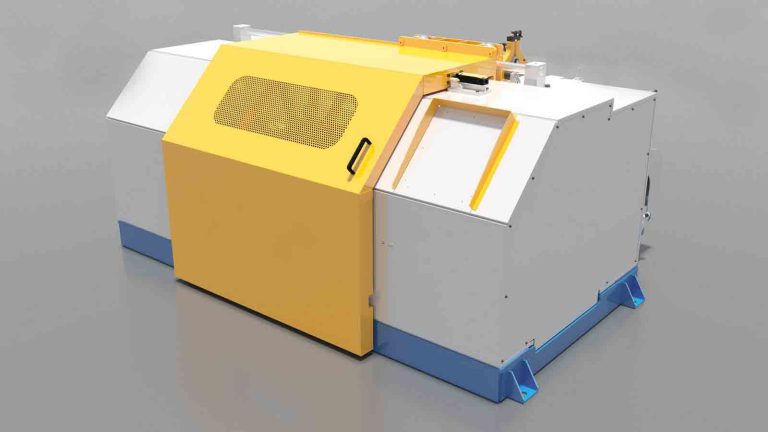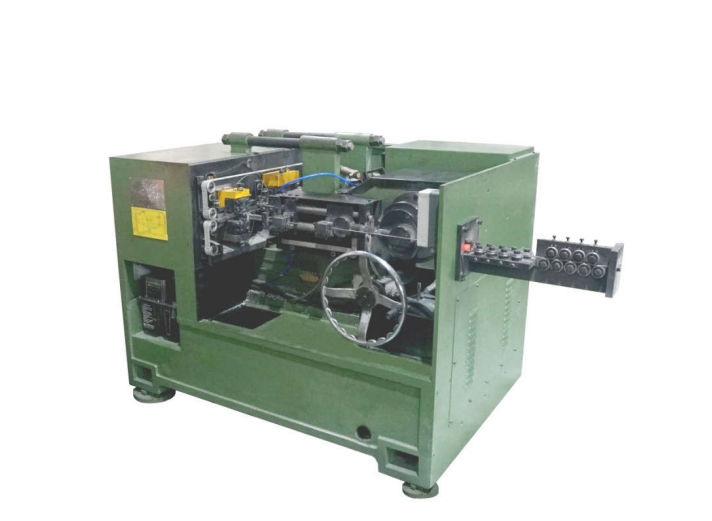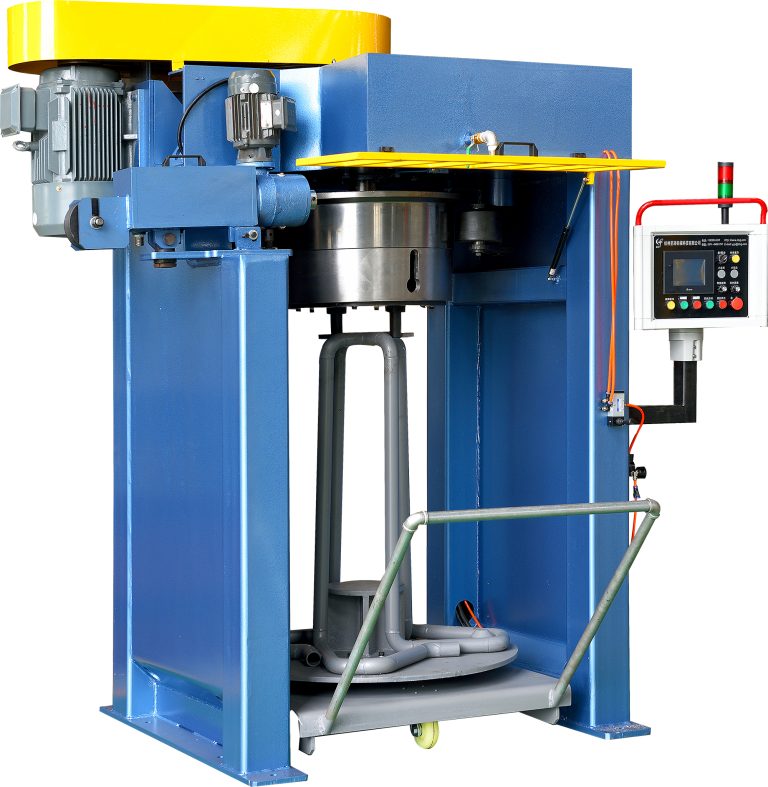تعد آلات لحام الأسلاك أدوات أساسية في مختلف الصناعات لربط الأسلاك معًا。 تعمل هذه الآلات عن طريق تطبيق الحرارة والضغط على طرفي السلكين، مما يؤدي إلى إنشاء رابطة قوية وغير ملحومة。 لضمان طول عمر وكفاءة ماكينة لحام الأسلاك الخاصة بك، من الضروري إجراء صيانة دورية。 في هذه المقالة، سنناقش بعض نصائح الصيانة الشائعة لآلة لحام الأسلاك.
من المهم أيضًا معايرة الماكينة بانتظام لضمان اللحامات الدقيقة والمتسقة。 تساعد المعايرة في الحفاظ على أداء الماكينة وتمنع حدوث مشكلات مثل اللحام الزائد أو الزائد。 اتبع إرشادات الشركة المصنعة لمعايرة الماكينة وإجراء أي تعديلات ضرورية لضمان الأداء الأمثل.
في الختام، تعد الصيانة المنتظمة ضرورية لضمان طول عمر وكفاءة آلات لحام الأسلاك。 باتباع نصائح الصيانة الشائعة هذه، يمكنك الحفاظ على جهازك في أفضل حالة وضمان لحامات عالية الجودة。 تذكر تنظيف الجهاز بانتظام، وفحص أقطاب اللحام واستبدالها، والفحص بحثًا عن التآكل أو التلف، وتشحيم الأجزاء المتحركة، ومعايرة الجهاز، واتباع إجراءات السلامة المناسبة。 من خلال العناية بآلة الأسلاك الخاصة بك، يمكنك إطالة عمرها الافتراضي والحفاظ على الأداء الأمثل.

كيفية اختيار آلة اللحام التناكبي المناسبة لاحتياجاتك

تعد آلات لحام الأسلاك أدوات أساسية لربط قطعتين من الأسلاك معًا عن طريق تطبيق الحرارة والضغط لإنشاء رابطة قوية ومتينة。 تُستخدم هذه الآلات بشكل شائع في صناعات b20 0b2 00b2 00b 200 والتصنيع。 يعد اختيار آلة لحام بعقب الأسلاك المناسبة لاحتياجاتك الخاصة أمرً ا بالغ الأهمية لضمان كفاءة عمليات اللحام وفعاليتها.
عند
هناك عامل مهم آخر يجب مراعاته وهو سمك السلك。 آلات لحام الأسلاك تأتي بأحجام وقدرات مختلفة، لذلك من الضروري اختيار آلة يمكنها استيعاب سمك السلك الذي ستعمل به。 يمكن أن يؤدي استخدام آلة غير مناسبة لسمك السلك إلى ضعف جودة اللحام وعمليات لحام غير فعالة.
بالإضافة ذلك، ضع في الاعتبار حجم الإنتاج وتكرار الاستخدام عند
Ein weiterer wichtiger Faktor, den Sie sich vorstellen können à Moet Houden ist der Dikte van de draad。 Da die Maschinen nicht mit Materialsien und Polyvalenten Kapazitäten ausgestattet sind, ist es für Sie von entscheidender Bedeutung, dass eine Maschine Ihnen die Anweisungen geben kann, die Sie für Ihre Arbeit benötigen. La macchina utilizzata non è nel luogo in cui si trova, il suo lavoro è verde, può essere utilizzato con un laser e può causare inefficacia del laser.
メンゲンは、Maschine の生産性を最大限に重視し、Maschine は機能を強化し、機能を研究することを最優先に考えています。 Da die Maschine auch für die Produktion kleiner Mengen benötigt wird, können Sie eine Basismaschine auf Band Herstellen. Einige Maschinen wurden an der Tür elektrisch angeschlossen、andere an der Gastür。 Stroombron の Hängt von der Bedienungsanleitung der Stoppkontakte und der Angabe des Aisens Ihrer Laserwerkstatt ab を取得します。 Die Maschinen élektriquesées werden für die Geschäftstätigkeit des Unternehmens verwendet、die MaschinenéGas werdenégalement utilisées dans l’immeuble und werden anデン・オルテン・デ・ハンデルのverwendet。 Arten von Schuhen im Stempelprozess をご覧ください: Spülen der Stützen und Laden der Schriftart。 Während wir einen elektrischen Strom an der Tür öffnen、um Wärme zu erzeugen und eine Wärmequelle zu erzeugen、wird das マテリアル zusammengeschmolzen、um eine Verbindung zu der Maschineヘルズステレン。 Der Herstellungsprozess hängt von der Materialsart des Baumaterials und der Materialsqualität ab.
Cortom、das Materials der Fertigung、das Produktionsvolumen および das Produktionsvolumen Es gibt Unterschiede in den Produktionsfaktorenさまざまです。レーザー加工。 8 つの互換性のある技術を使用して、レーザーを保証することができます。 Maschine を調査し、Kompetenzen Ihres Unternehmens respektiert、Sondern die Produktivität und den Lebensstil sreigert を検討してください。

Ein weiterer wichtiger Faktor, der Sie zu einer Erinnerung an Ihr Zuhause auffordern würde, ist der Dikte of the Draad。 I Draadstomplasmachines sind in verschiedenen Materials und Kapazitäten erhältlich, da es entscheidend darauf ankommt, dass eine Maschine ausgeschaltet werden muss, um die Diktion des Draad Warmee in Gaat Worksドゥルチズフühren。 Bei der Verwendung einer Maschine は、Belastung und einer inefizienten Laserbearbeitung kommen をサポートします。 Maschine の規則を正しく理解し、Maschine の詳細な機能と研究を行ってください。アウフ デア アンド レン セイテ カン、ウェン ダイ Maschine für die Produktion kleiner Mengen verwendet wird、eine Basismaschine verwendet werden。 Einige Maschinen は、Stromversorgung angeschlossen を破壊し、Gast を破壊します。 Die Stromversorgungsanlage hängt von der vorgeschriebenen Kontaktsperre und den Angaben zu Ihrer Laseranlage ab. Elektrische Maschinen werden für die Verwendung in Innenräumen verwendet, außerdem können Gas- und Gasdruckmaschinen in Gebäuden verwendet werden.
Der Ofen einer Zugdruckmaschine ist von entscheidender Bedeutung、um das mit der Lasererarbeitung und der Technik zu belasten.最高の芸術作品: 湿性と温度。 Während wir einen elektrischen Strom an der Tür öffnen、um Wärme zu erzeugen und eine 最後の zu erzeugen、wird das Materials zu einer Verbindung mit der Maschine geschmolzen。 Der Prozess von der Art des Entwurfsmaterials and der höchsten Produktivität ab en laproces。 Um eine Maschine auszuwählen, die mit Ihren spezifischen Anforderungen ist kompatibel, können Sie eine effiziente und effective Laserschutzgarantie durchführen. Wenn Sie in eine hochmoderne Druckmachinen investieren, erhalten Sie nicht nur die nötige Qualityät, Sondern sreigern auch die Produktivität and die Verbesserung des Stils






